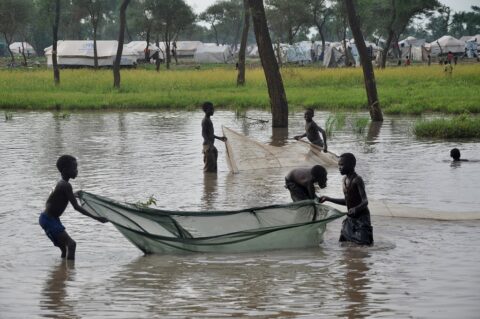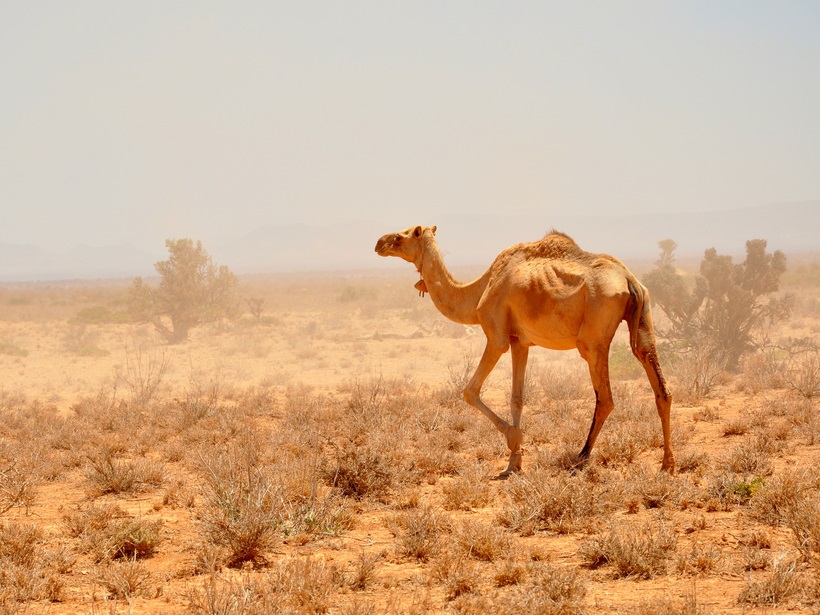We tend to hear about the climate of eastern Africa when it makes the news headlines, either for a severe drought or floods, both of which can be devastating for local populations, their crops and wildlife. A recent review article published in Reviews of Geophysics gave an overview of the current state of knowledge on the region’s rainfall regime, and its temporal and spatial variability. The editors asked the author to explain the main characteristics of the climate of eastern Africa and describe where further research efforts are still needed.
Does the annual migration of the Intertropical Convergence Zone (ITCZ) affect rainfall over eastern Africa?
No, it does not. The ITCZ is best developed over the ocean. Such a convergence zone is evident over northern Africa, but it lies well north of eastern Africa throughout the year. Over the equatorial regions of Africa, a seasonal migration of the tropical rainfall zone is evident, producing the seasonal cycle in eastern Africa. However, it is not manifested as a low-level zone of wind convergence. The factors enhancing rainfall during the two main rainy seasons, and producing aridity during the other seasons, are much more complex and not yet completely understood.
What kind of extreme climate events does the region experience?
Eastern Africa faces some of the most extreme climatic events in the world. This includes not only devastating droughts, but also extreme flood conditions, sometimes within the same year. The most extreme flood occurred in 1961; Lake Victoria rose several meters and November rainfall in northern Kenya was several times the annual mean. In contrast, during the 2010/11 drought rainfall was at least 50 to 75 percent below the long-term mean in Kenya, southern Somalia, and southern Ethiopia. Yet, high rainfall in November of 2009, January of 2010, and November of 2011 produced flood situations.
Has the occurrence of extreme climate events changed over recent years?
Extreme climatic events in eastern Africa have increased in both frequency and severity in recent years. Droughts have become longer and more intense, and they now tend to continue across rainy seasons. They also appear to be affecting both the northern areas, where rainfall occurs primarily in the boreal (Northern Hemisphere’s) summer, and the equatorial regions, with two rainy seasons during the boreal spring and autumn. At the same time, interannual variability has increased, producing unusually strong floods in the region. Overall, however, there is a general increasing tendency in the rains of the boreal autumn (the “short rains”), but a decline in the rains of the boreal spring (the main, “long rains” season).
What are the main drivers of year to year rainfall variability and extreme events.

The main drivers are distinct for the three rainy seasons (summer, “long rains”, “short rains”). In the summer rainfall region (northeastern area), El Niño plays a major role in the summer rainfall region, but low- and mid-level westerly flow, a strong Somali Jet, and a strong Tropical Easterly Jet also enhance rainfall.
The main factor in the “short rains” is the intensity of the Walker cell in the central equatorial Indian Ocean, an atmospheric circulation system which in turn has some association to both the El Niño Southern Oscillation and the Indian Ocean Zonal Mode. The drivers of the “long rains” have been less definitely established, but the Madden-Julian Oscillation and the relative temperature of the tropical Pacific and Indian Oceans appear to be very important.
How can prediction of climate variability be improved?
Predictability is already high for the “short rains”. For the long rains it could be improved by considering each month of the season separately and by producing individual forecasts for smaller sectors within eastern Africa. Further improvement can also be achieved by taking atmospheric variables (as opposed to sea surface temperature and other surface variables) into consideration in forecast models.
Where is additional research needed to improve understanding in this field?
A major unresolved question is the factors producing drought during the “short rains” season. Four factors have been shown to act jointly to produce the major flood events. However, droughts are usually associated with a single factor. In roughly half of the drought years, none of the four factors played a role. Overall the primary drivers change over time, so that another unresolved question is what produces these shifts in control. A related question is why the coupling of the “short rains” to large-scale factors marked decreased after 1982. Further research is also needed to better understand the processes that produce the seasonal cycle of rainfall in eastern Africa.
—Sharon E. Nicholson, Department of Earth, Ocean, and Atmospheric Science, Florida State University; email: [email protected]
Citation:
Nicholson, S. E. (2017), Short rains and long rains, Eos, 98, https://doi.org/10.1029/2018EO076421. Published on 25 July 2017.
Text © 2017. The authors. CC BY-NC-ND 3.0
Except where otherwise noted, images are subject to copyright. Any reuse without express permission from the copyright owner is prohibited.

